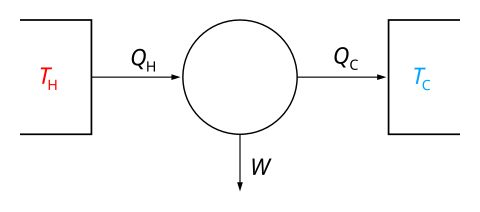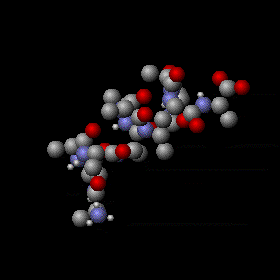The interaction between the equilibrium constant (K), reaction quotient (Q), and Gibbs energy (G) is vital in the chemical thermodynamics. This relationship governs the direction and extent of chemical reactions.

1.Equilibrium Constant (K):
The equilibrium constant, K, represents the ratio of the concentrations of products to reactants, each raised to the power of their stoichiometric coefficients, at equilibrium. For a generic chemical reaction: aA + bB ↔ cC + dD
The equilibrium constant is expressed as:
K = [C]c [D]d / [A]a [B]b
Here, [A], [B], [C], and [D] are the molar concentrations of the reactants and products. K is temperature-dependent and provides a quantitative measure of how far a reaction proceeds to form products at equilibrium.
2. Reaction Quotient (Q):
The reaction quotient, Q, has the same mathematical form as K but applies to the concentrations of reactants and products at any point during the reaction, not just at equilibrium:
Q = [C]c [D]d / [A]a [B]b
Comparing Q to K helps determine the reaction’s direction:
Q < K: The reaction moves forward (toward products).
Q > K: The reaction moves backward (toward reactants).
Q = K: The system is at equilibrium.
3. Gibbs Free Energy (G):
Gibbs free energy, G is a thermodynamic potential that predicts the spontaneity of a reaction. The change in Gibbs free energy, ΔG, for a reaction at a given moment is: ΔG = ΔG∘ + RTln Q
Where:
ΔG∘: Standard Gibbs free energy change (at standard conditions).
R: Universal gas constant (8.314 J/mol K).
T: Absolute temperature in kelvins.
Q: Reaction quotient.

4. The Link Between ΔG, K, and Q
At equilibrium (Q = K): ΔG = 0 Substituting ΔG = 0
into the equation: 0 = ΔG∘ + RTlnK This gives:
ΔG∘ = −RTlnK
Thus, K is directly related to the standard Gibbs free energy change. A large K (greater than 1) indicates a negative ΔG∘, favoring product formation. on the other hand, a small K (less than 1) corresponds to a positive ΔG∘, favoring reactants.
For any reaction state: ΔG = RTlnQ / K This equation shows the deviation of the system from equilibrium. The term ln(Q / K) quantifies the driving force for the reaction to proceed.
5. Interpretation of Relationships
1.Spontaneity:
Q < K: ΔG < 0, reaction proceeds forward (spontaneous).
Q > K: ΔG > 0, reaction proceeds backward (non-spontaneous).
Q = K: ΔG = 0, reaction is at equilibrium.
2. Reaction Adjustment: ΔG acts as a guide for the system, pushing it toward equilibrium where Q = K and ΔG = 0.
6. Practical Applications
This relationship is essential in:
Industrial Chemistry: Optimising reaction conditions for maximum for give up.
Biological Systems: Energy transfer and metabolic pathways.
Environmental Chemistry: Predicting the fate of pollutants in natural systems.
Note :-
The relationship between K, Q, and ΔG gracefully summarise the essence of chemical equilibrium and reaction spontaneity. K defines the equilibrium position, Q provides a real-time status, and ΔG acts as the system’s compass, ensuring a drive toward balance.
The equilibrium constant (K) quantifies the ratio of the concentrations of products to reactants at equilibrium, each raised to their stoichiometric coefficients. It indicates the extent of a reaction:
If K > 1: Products are favored at equilibrium.
If K < 1: Reactants are favored at equilibrium.
The reaction quotient (Q) has the same mathematical form as K but applies to concentrations or partial pressures at any point in the reaction, not necessarily at equilibrium. Comparing Q to K reveals the reaction’s direction:
Q < K: The reaction proceeds forward to form more products.
Q > K: The reaction proceeds backward to form more reactants.
Q = K: The reaction is at equilibrium.
The change in Gibbs free energy (ΔG) predicts whether a reaction is spontaneous:
ΔG < 0: The reaction is spontaneous (proceeds forward).
ΔG > 0: The reaction is non-spontaneous (proceeds backward).
ΔG = 0: The system is at equilibrium.
At equilibrium, Q = K and ΔG = 0. The equation becomes:
ΔG∘ = −RTlnK This shows that:
If K > 1: ΔG∘ < 0, products are favored.
If K<1: ΔG∘ > 0, reactants are favored.
When Q ≠ K, the reaction is not at equilibrium, and the Gibbs free energy change is given by:
ΔG = RTlnQ / K
If Q < K, the reaction proceeds forward.
If Q > K, the reaction proceeds backward.
This relationship allows us to:
Predict the direction of a reaction.
Determine the equilibrium position.
The energy changes driving the reaction.
This is vital in fields like industrial chemistry, biochemistry, and environmental science.